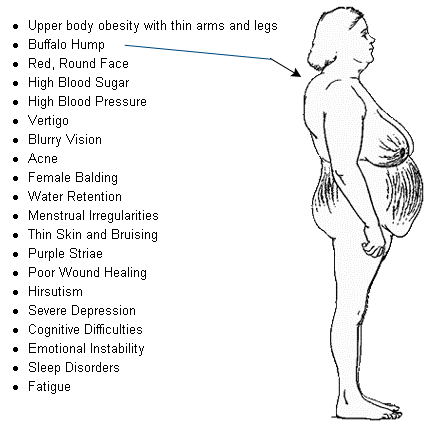Your patient is on long-term prednisone therapy. This patient should have frequent follow-up office visits to assess for which of the following?
Dermatitis and headaches
Heart failure and headaches
Hyperglycemia and osteoporosis
Weight loss and hypoglycemia
The Correct Answer is C
A. Dermatitis and headaches: Prednisone use can sometimes cause skin issues, but dermatitis is not a common side effect. Headaches can also occur, but they are not specific to long-term prednisone therapy.
B. Heart failure and headaches: Prednisone does not directly cause heart failure. Headaches can occur but are not specific indicators of prednisone side effects.
C. Hyperglycemia and osteoporosis: Prednisone can lead to elevated blood glucose levels (hyperglycemia) and increased bone loss (osteoporosis) when used long-term. Regular monitoring is essential to manage these potential side effects.
D. Weight loss and hypoglycemia: Prednisone can cause weight gain rather than weight loss. Hypoglycemia (low blood sugar) is not a common side effect of prednisone; it typically causes hyperglycemia (high blood sugar) instead.

Nursing Test Bank
Naxlex Comprehensive Predictor Exams
Related Questions
Correct Answer is D
Explanation
A. Neutrophils: Neutrophils are a type of white blood cell that plays a key role in the immune system's response to infections, particularly bacterial infections. They are not primarily involved in eliminating cancer cells.
B. Eosinophils: Eosinophils are another type of white blood cell. They are important in the immune response to parasites and are also involved in allergic reactions. While they have a role in the immune system, they are not the primary cells involved in eliminating cancer cells.
C. Platelets: Platelets, also known as thrombocytes, are not cells but rather small cell fragments. They are essential for blood clotting and do not directly participate in the immune response against cancer cells.
D. Macrophages: Macrophages are a type of white blood cell that are involved in the immune system's defense against cancer. They are phagocytes, which means they engulf and digest cellular debris, foreign substances, and cancer cells. Macrophages play a crucial role in the body's immune surveillance and response against cancer.
Correct Answer is B
Explanation
A. Antibiotics are prescribed according to culture and sensitivity reports:
When antibiotics are prescribed based on specific tests like cultures and sensitivity reports, it ensures that the right antibiotic is chosen for the specific bacteria causing the infection. This practice helps in targeting the infection more effectively, reducing the risk of antibiotic resistance.
B. Patients stop taking an antibiotic after they feel better:
This scenario is problematic. When patients start feeling better, they might assume the infection is completely gone and stop taking antibiotics before the prescribed course is finished. This premature discontinuation can leave some bacteria alive, which may develop resistance to the antibiotic used. This practice is a significant contributor to antibiotic resistance.
C. Antibiotics are taken with ascorbic acid (vitamin C):
Ascorbic acid (vitamin C) doesn't have a significant impact on antibiotic resistance. It is not a factor contributing to antibiotic resistance.
D. Antibiotics are taken with water or juice:
Whether antibiotics are taken with water or juice doesn’t directly influence antibiotic resistance. Proper hydration is essential to support the body's overall health, but it doesn't impact the development of antibiotic resistance.
Whether you are a student looking to ace your exams or a practicing nurse seeking to enhance your expertise , our nursing education contents will empower you with the confidence and competence to make a difference in the lives of patients and become a respected leader in the healthcare field.
Visit Naxlex, invest in your future and unlock endless possibilities with our unparalleled nursing education contents today
Report Wrong Answer on the Current Question
Do you disagree with the answer? If yes, what is your expected answer? Explain.
Kindly be descriptive with the issue you are facing.
